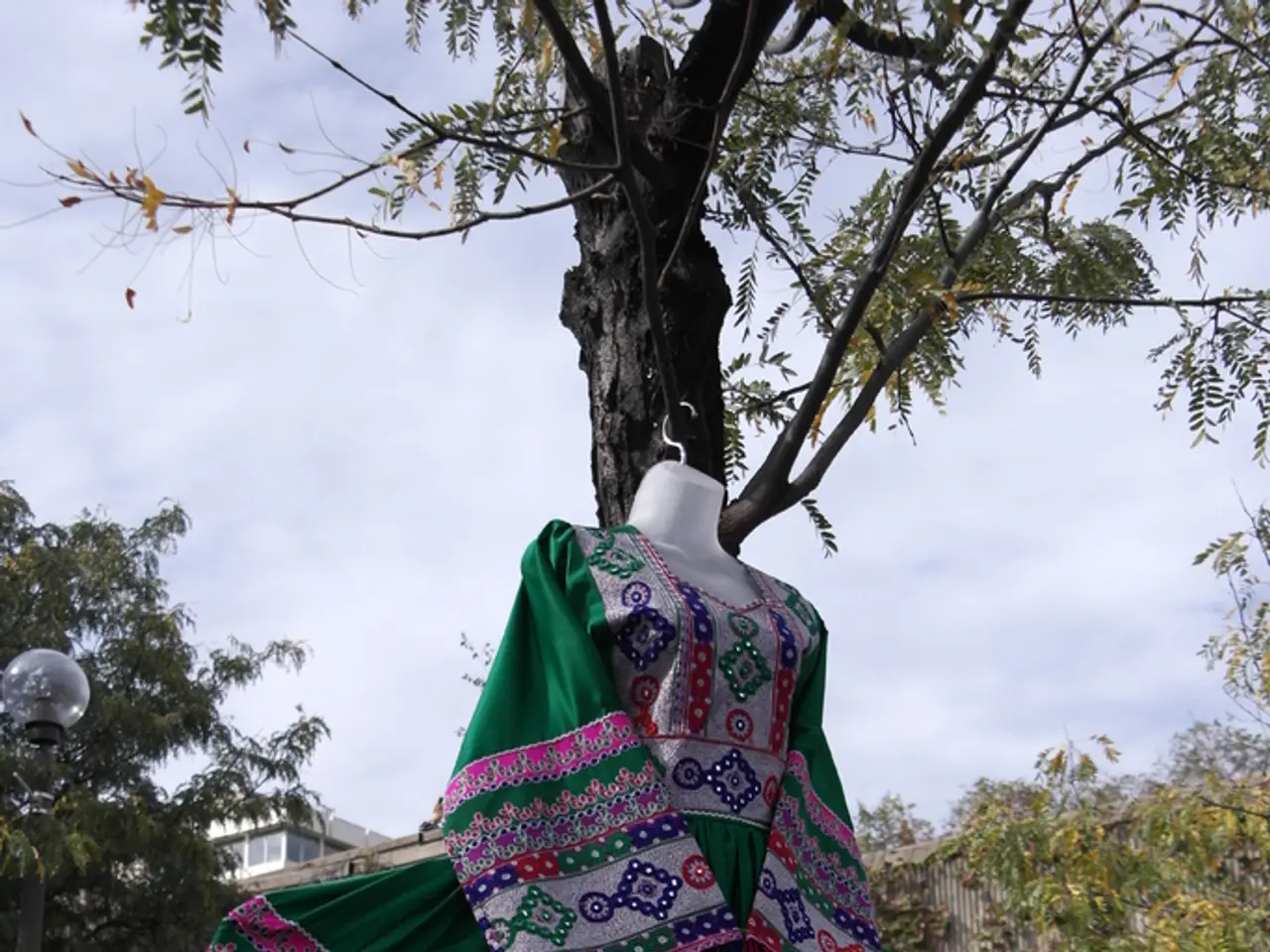Quick Look at Fast Fashion: Its Environmental and Social Implications
Transforming Fast Fashion: A Sustainable Future Takes Shape
Fast fashion, with its culture of disposable clothing, has long been a significant contributor to environmental degradation, social issues, and ethical concerns. However, the fashion industry is beginning to address these challenges through various initiatives.
Legislative Actions and Corporate Commitments
France has taken a leading role in this transformation with the Anti-Waste Law for a Circular Economy (AGEC Law), enacted in 2020. This legislation, amended in 2025, imposes environmental penalties on ultra-fast fashion products and mandates the donation or recycling of unsold goods, among other provisions [1].
Large fast fashion companies are also stepping up, with SHEIN aiming to source forest-safe viscose, use paper-based packaging, and increase textile recycling by 2025 [3]. These commitments demonstrate a growing focus on circularity and sustainable materials within the industry.
The Rise of Slow Fashion and Upcycled Fashion
In response to fast fashion's environmental and social impacts, the slow fashion movement promotes quality, durable clothing produced through environmentally friendly and ethical practices [2]. Leading brands like Patagonia, Eileen Fisher, and Rothys are integrating circular economy principles and ethical manufacturing [4].
The upcycled fashion market is also expanding, driven by technologies like AI-assisted design and digital fitting rooms that increase transparency and personalization [4]. This growth reflects a growing consumer demand for reducing waste and conserving resources.
Industry Decarbonization and Renewable Energy Investments
Apparel suppliers are scaling decarbonization efforts, with investments in renewable energy and sector-wide priorities such as shifting to renewable energy, maximizing efficiency, and eliminating coal in manufacturing [5]. The Apparel Impact Institute is leading funding and partnerships to accelerate these climate actions, with a $250 million Fashion Climate Fund targeting halving carbon emissions by 2030 [5].
A Shift Towards Circular Business Models
The future of fast fashion will likely involve a shift towards more circular business models that prioritise recycling and reusing materials. Consumers can promote this change by embracing thrifting and second-hand shopping as viable alternatives to fast fashion [6].
Consumer Action and Conscious Consumption
Consumers play a crucial role in making a difference in fast fashion. By making conscious purchasing decisions and supporting sustainable alternatives, they can help reduce the industry's environmental impact and promote ethical labor conditions [7].
Educating oneself about the environmental and social impact of fast fashion is also essential. By understanding the issues, consumers can make informed decisions and reduce their overall consumption of clothing [8]. Embracing a minimalist approach to fashion and focusing on quality over quantity can further help reduce the impact of fast fashion [9].
Fast fashion's impact extends beyond the environment and into areas such as mental health and self-esteem, as it perpetuates unrealistic beauty standards and promotes a throwaway mentality [10]. By supporting sustainable and ethical fashion brands that prioritise transparency and responsible production practices, consumers can contribute to a more positive and sustainable fashion industry.
References:
[1] AGEC Law (2020) - https://www.legifrance.gouv.fr/affichTexte.do?cidTexte=JORFTEXT000039244636&categorieLien=id [2] Slow Fashion (2021) - https://www.slowfashionmovement.com/ [3] SHEIN Sustainability Report (2021) - https://www.shein.com/corporate/sustainability [4] Upcycled Fashion Market (2021) - https://www.statista.com/topics/1153/upcycled-fashion/ [5] Apparel Impact Institute (2021) - https://apparelimpact.org/ [6] Thrifting and Second-Hand Shopping (2021) - https://www.thrifted.com/ [7] Conscious Consumerism (2021) - https://www.consciousconsumer.com/ [8] Fast Fashion and Mental Health (2021) - https://www.psychologytoday.com/us/blog/the-culture-countertransference/202003/fast-fashion-and-mental-health [9] Minimalist Fashion (2021) - https://www.minimalism.com/minimalist-fashion/ [10] Unrealistic Beauty Standards (2021) - https://www.apa.org/topics/body-image/unrealistic-beauty-standards
- The upcycled fashion market, driven by technologies like AI-assisted design and digital fitting rooms, is expanding due to a growing consumer demand for reducing waste and conserving resources.
- By understanding the environmental and social impact of fast fashion, consumers can make informed decisions and reduce their overall consumption of clothing, promoting an approach of minimalism in their fashion lifestyle.
- Large fast fashion companies, such as SHEIN, are making commitments to source forest-safe viscose, use paper-based packaging, and increase textile recycling, reflecting a growing focus on sustainable materials within the industry.
- To promote a sustainable and ethical fashion industry, consumers can support brands that prioritize transparency and responsible production practices, helping to address challenges like environmental degradation and social issues.




